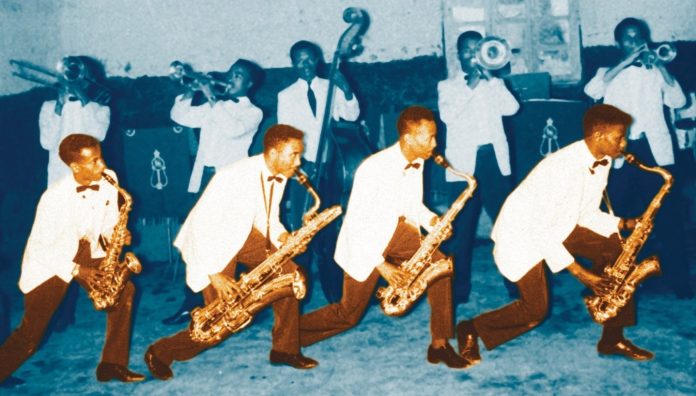Over the last month, I’ve seen quite a few people on social media finding a new love for Ethio-jazz. As an Ethiopian who is a little too prideful of it, I have loved seeing others of different cultures and backgrounds appreciate the soulful music. Because I was fortunate enough to grow up with the sounds of Mulatu Astatke, Getatchew Mekurya, and other Ethiopian artists, it’s exciting to hear the reactions of those discovering them for the first time.
A genre I didn’t think would go mainstream for our generation, Ethio-jazz has garnered attention outside of Ethiopia for only the second time since its creation in the ’50s. Its love has grown in waves; audiences only really know these artists due to its introduction to the U.S. in the mid-20th century, then its revival in the ‘90s. Astatke, known as “The Father of Ethio-jazz,” brought his influence to New York in the ‘60s and was embraced by the experimental jazz scene. He became the first African student at the Berklee College of Music in Boston, where he was encouraged to explore his own sound. As rock and roll was gaining traction in the U.S., Astatke was exactly what jazz musicians needed in order to hold on to its popularity. After his time in the states, Astatke decided to travel back to Ethiopia and build on his success.
Astatke was surprised at how well the 5-note scale of Ethiopian orthodox music paired with instruments of the western world like electric pianos and his famous use of the vibraphone. This combination allows Ethio-jazz to sound both nostalgic and innovative. It is reminiscent of the songs led by priests in northern regions of the country, while also being familiar to those in the west. One of Astatke’s most known works, “Yékérmo Séw (A Man of Experience and Wisdom),” is a perfect example of the mesh between the sounds of East Africa and the Americas. The song feels like a conversation with an intelligent elder recounting the highs and lows of their life. The melody is repetitive and catchy, fully supported by the trumpets. The second half of the song includes electric piano and guitar solos sandwiched between this familiar melody. Though Astatke has experimental tracks like “Radcliffe,” an immediate favorite of mine, his best works are those that reach fully into his Ethiopian heritage.
The beauty of Ethio-jazz comes from its instrumental nature. Stories are told through riveting horns and nostalgic tones rather than lyrics. This proved useful when The Derg, a military council, took power in the mid-’70s, completely controlling the nation and delegating all forms of media which fed into what could and couldn’t be sung. Astatke kept the genre alive during this dark time in Ethiopia’s history, trying his best to preserve the success of Ethiopia’s Golden Age of music. The modern era of Ethio-jazz began after The Derg was overthrown, reintroducing artists that were forced to leave during the regime’s reign. The modern era began in the ‘90s with Ethiopiques, volumes of Ethio-jazz artists’ collections during their prime. The artists that were once loved before they were hidden away from the East African nation had made a historical return. Getachew Mekurya was praised for the work on his album “The Negus (King) of Ethiopian Sax,” when it was rereleased in 2004. His most popular song, “Muziqa heywété,” quickly grew in popularity as it was a reminder of a prosperous time in Ethiopian history. The sax is slow and calm bringing a sense of peace to anyone that listens.
It’s always great to see genres from around the world grow a larger audience. An appreciation of art forms from different regions can create a better sense of community. That is what Ethio-jazz has always strived to do. It surpasses language barriers, fallen democracies, and the boundaries of music to inspire others to do the same. I’m excited to see what this generation does with the wonderful history of the genre as we continue to build off of it.


